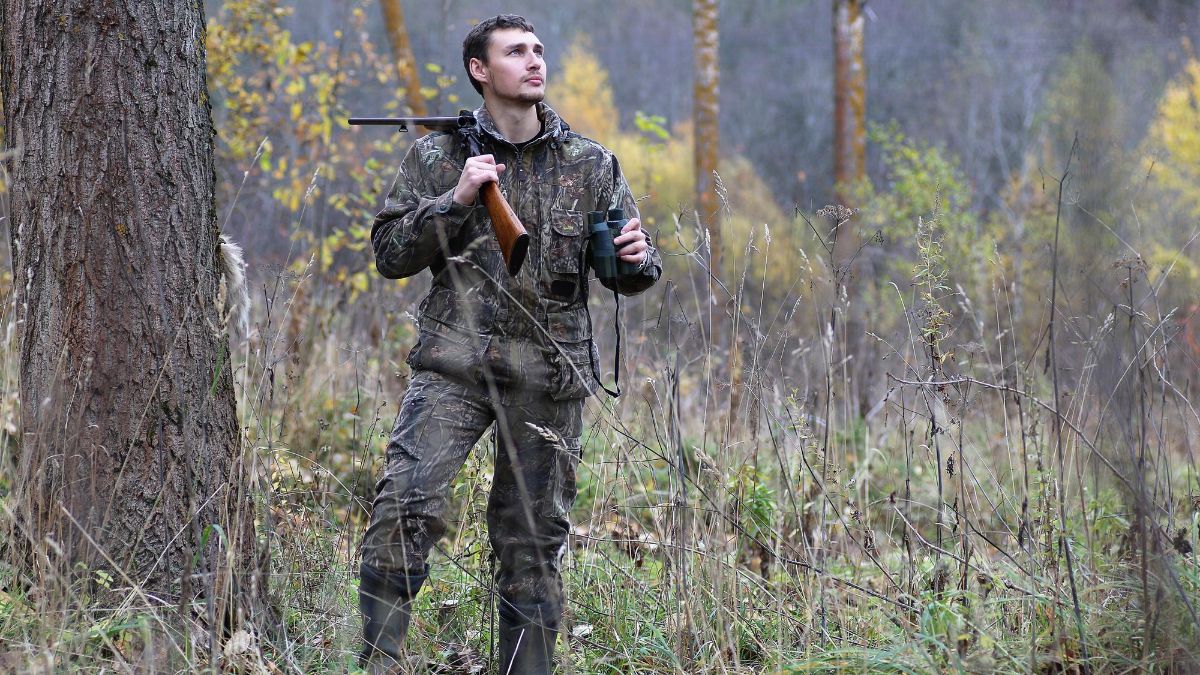
Hunting is not just about luck; it requires careful planning and the development of effective strategies. Whether you’re a seasoned hunter or a beginner, having a well-thought-out plan can significantly increase your chances of success. In this blog post, we will explore the key steps to develop effective hunting strategies that can help you achieve your goals.
Understanding your target species
Understanding your target species is a fundamental aspect of effective hunting. It involves gaining knowledge about the behavior, habits, and characteristics of the specific animal you are pursuing. Understanding the target species helps you determine their preferred habitats, feeding patterns, seasonal movements, and even their responses to environmental factors. By researching and studying your target species, you can identify the best times and locations to find them, increasing your chances of success. Additionally, understanding your target species allows you to make informed decisions about the appropriate hunting techniques, equipment, and strategies needed to pursue and harvest them effectively. Investing time in understanding your target species will greatly enhance your hunting experience, whether it’s big game, waterfowl, or upland birds.
Assessing the hunting environment
Assessing the hunting environment is crucial in planning a successful hunt. It involves evaluating factors such as the terrain, climate, and available food sources in your hunting area. Understanding the terrain helps determine the best locations for setting up blinds or stands and identify natural features that can be used for concealment and cover. Climate conditions, such as temperature and wind patterns, can impact animal behavior and movement, so it’s important to take these into account when strategizing your approach. Assessing available food sources, such as forage or water, helps identify areas where your target species are likely to congregate, making locating and engaging them easier. By thoroughly assessing the hunting environment, you can develop a well-informed plan that maximizes your chances of a successful hunt.
Planning your approach
A well-planned approach sets the foundation for a successful hunt. Start by setting clear hunting goals and objectives. Are you hunting for meat, trophy, or both? This clarity will guide your decision-making throughout the process. Next, select appropriate hunting equipment and gear based on your target species and the environment you’ll be hunting in. These include shotgun shell hulls, shot and slugs, and shotshell primers. These empty casings play a significant role in determining the effectiveness of your shotgun and the type of game you’ll be targeting. Finally, develop a detailed hunting itinerary that includes specific dates, locations, and backup plans if necessary.
Implementing effective scouting techniques
Scouting is an essential part of hunting preparation. It involves gathering information about the target species, their habits, and the hunting environment. One effective technique is to use trail or hunting cameras to capture images and videos of wildlife activity in specific areas. These cameras provide valuable insights into the target species’ movement patterns, feeding times, and population density. Additionally, spending time in the field observing animal behavior and tracks can provide valuable information. Identifying bedding areas, feeding grounds, and travel corridors helps determine prime locations for setting up blinds or stands. Utilizing digital mapping tools and satellite imagery can also aid in identifying potential hotspots. By implementing these scouting techniques, hunters can gather critical data that informs their hunting strategies and increases their chances of a successful harvest.
Mastering stealth and concealment
Hunting success often hinges on your ability to move silently and remain concealed from your target. It involves a combination of skill, patience, and the use of appropriate equipment. Understanding the behavior and senses of the target species is crucial in determining how to conceal oneself effectively. This includes wearing camouflage clothing that matches the surrounding environment and using scent control techniques to minimize human odors. Moving slowly and silently, paying attention to wind direction, and utilizing natural cover such as trees or vegetation can aid in remaining undetected. Additionally, employing stealthy tactics like stalking or still-hunting can help close the distance between the hunter and the target. The mastery of stealth and concealment allows hunters to get within range for a clean and ethical shot, increasing their chances of a successful harvest.
Applying effective calling and decoy strategies
Calling and decoying techniques can be powerful tools in attracting and luring your target species. Learning various animal calls and their purposes is essential. Practice different calls to mimic the sounds of your target species accurately. Additionally, select and use appropriate decoys that resemble your target species’ appearance and behavior. Timing and proper placement of calls and decoys are crucial for success.
Employing strategic stand and blind placement
Strategically placing yourself in high-traffic areas and travel corridors increases your chances of encountering your target species. Identify well-used trails, feeding areas, and water sources, and position yourself accordingly. Utilize natural cover and topography to remain concealed while maintaining a clear line of sight. Adapting to changing wind directions and patterns is critical, as animals rely heavily on their sense of smell.
Tracking and interpreting animal signs
Tracking and interpreting animal signs can provide valuable insights into the presence and behavior of your target species. Learn to recognize different types of tracks, scat, and rubs left behind by your prey. This knowledge will help you determine if the area is currently active and if you’re on the right track. Understanding animal behavior through sign interpretation can guide your hunting strategies and increase your chances of success.
Adapting and improvising during hunts
Hunting conditions can be unpredictable, and it’s essential to adapt and improvise when necessary. Be prepared to deal with unexpected situations and challenges that may arise during your hunt. Stay flexible and adjust your strategies based on changing weather conditions, animal movements, or other external factors. Thinking creatively and seizing opportunities as they arise can make a significant difference in your hunting success.
Developing effective hunting strategies is vital for achieving success in the field. By understanding your target species, assessing the hunting environment, planning your approach, implementing scouting techniques, mastering stealth and concealment, applying calling and decoy strategies, employing strategic stand and blind placement, tracking animal signs, and adapting during hunts, you can significantly increase your chances of a successful hunt.
Remember, hunting is not just about the end result; it’s about immersing yourself in nature, honing your skills, and respecting the wildlife and their habitats. Prioritize safety, follow local regulations, and practice ethical hunting. Incorporating these strategies into your hunting routine can enhance your chances of a successful and fulfilling hunting experience.




